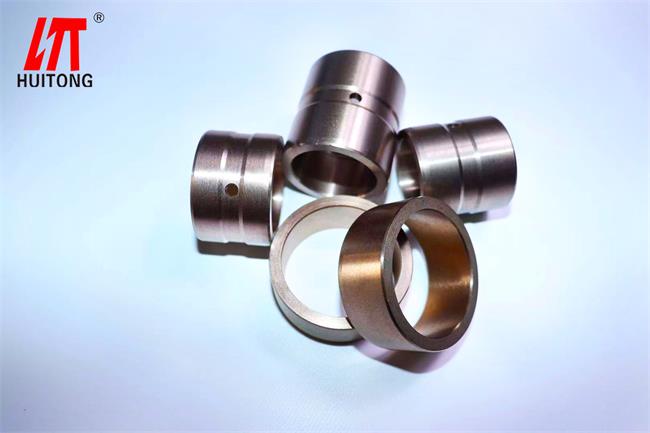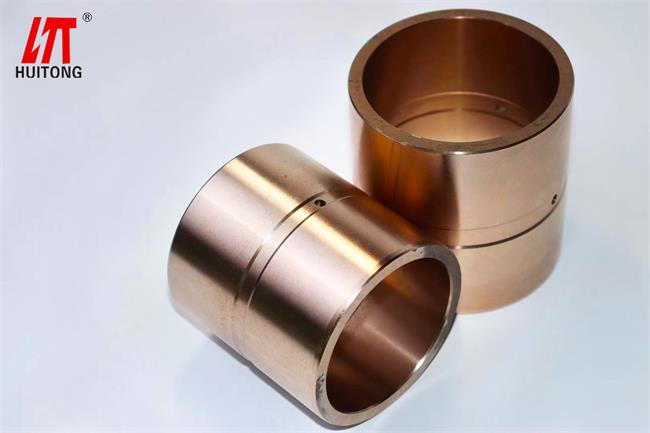 HuiTong
HuiTong  2025-06-13
2025-06-13
Classification of digger bushes alloys
Brass: Brass is an alloy composed of copper and zinc. If it is only composed of copper and zinc, it is called ordinary brass. If it is a variety of alloys composed of two or more elements, it is called special brass. The brass sleeve has strong wear resistance.
Special brass is also called special brass. It has high strength, high hardness and strong chemical resistance. The mechanical properties of cutting are also outstanding. The seamless copper tube drawn from brass is soft and has strong wear resistance. Brass seamless pipes can be used for heat exchangers and condensers, cryogenic pipelines, and subsea transportation pipes. Manufacture of sheets, bars, bars, pipes, casting parts, etc. The copper content is 62%~68%, the plasticity is strong, and it is used to manufacture pressure-resistant equipment.

Tin bronze: The tin content is generally between 3% and 14%, which is mainly used to make elastic components and wear-resistant parts. This alloy has high mechanical properties, anti-wear properties and corrosion resistance, easy cutting processing, good brazing and welding properties, small shrinkage coefficient, and non-magnetic.
The tin bronze copper sleeve is very resistant to corrosion in the atmosphere, sea water, fresh water and steam, and is widely used in steam boilers and sea-going ship parts. It is also widely used in electrical, light industry, machinery manufacturing, construction industry, defense industry and other fields.
Aluminum bronze: The aluminum content generally does not exceed 11.5%, and sometimes an appropriate amount of iron, nickel, manganese and other elements are added to aluminum bronze to further improve the performance. Aluminum bronze can be strengthened by heat treatment, its strength is higher than tin bronze, and its high temperature oxidation resistance is also better. It has high strength and good wear resistance. It is used for high-strength screws, nuts, digger bushes, sealing rings, etc., and wear-resistant parts. The most prominent feature is its good wear resistance.

Common copper sleeve material
1. ZCuSn6Zn6Pb3 can be used to manufacture wear-resistant parts such as bushes, gears, and worm gears that work under medium load and speed.
2. ZCuSn10P1 is a typical tin-phosphorus bronze, with high hardness, excellent wear resistance, not easy to produce seizure, good casting performance and cutting performance, and good corrosion resistance in the atmosphere and fresh water. It can be used for wear-resistant parts that work under high loads and high sliding speeds, such as connecting rods, bushings, bearings, gears, worm gears, etc.
3. ZCuAl9Mn2, ZCuAl9Fe4, aluminum bronze has high strength, high density, and stable chemical properties. Commonly used in valve bodies, worm gears, nuts, pipe fittings, etc.
4. ZCuZn25Al6Fe3Mn3 high-strength aluminum brass has high strength, high hardness, high wear resistance, moderate plasticity and good corrosion resistance. Therefore, it is used to cast high-load wear-resistant weights on heavy machinery.
5. ZCuPb10Sn10: good lubricity, wear resistance and corrosion resistance, suitable for bimetal casting materials. Bearings for vehicles, bimetallic bushes for internal combustion engines with a peak load of 100Mpa, as well as piston pin sleeves, friction plates, etc.
6. ZCuPb15Sn8: In the absence of lubricants and water-based lubricants, it has good sliding and self-lubricating properties, easy cutting, poor casting performance, and good corrosion resistance to dilute acids. Bearings with high surface pressure and side pressure can be used to manufacture copper cooling pipes of cold rolling mills, parts with impact resistance up to 50Mpa, bimetallic bushes for internal combustion engines, mainly used for piston pin sleeves with loads up to 70Mpa, and acid-resistant parts.
7. ZCuZn38Mn2Pb2: It has good mechanical properties and corrosion resistance, good wear resistance, and good cutting performance. General purpose structural parts, simple castings used in ships, instruments, etc., such as sleeves, digger bushes, bearings, sliders, etc.